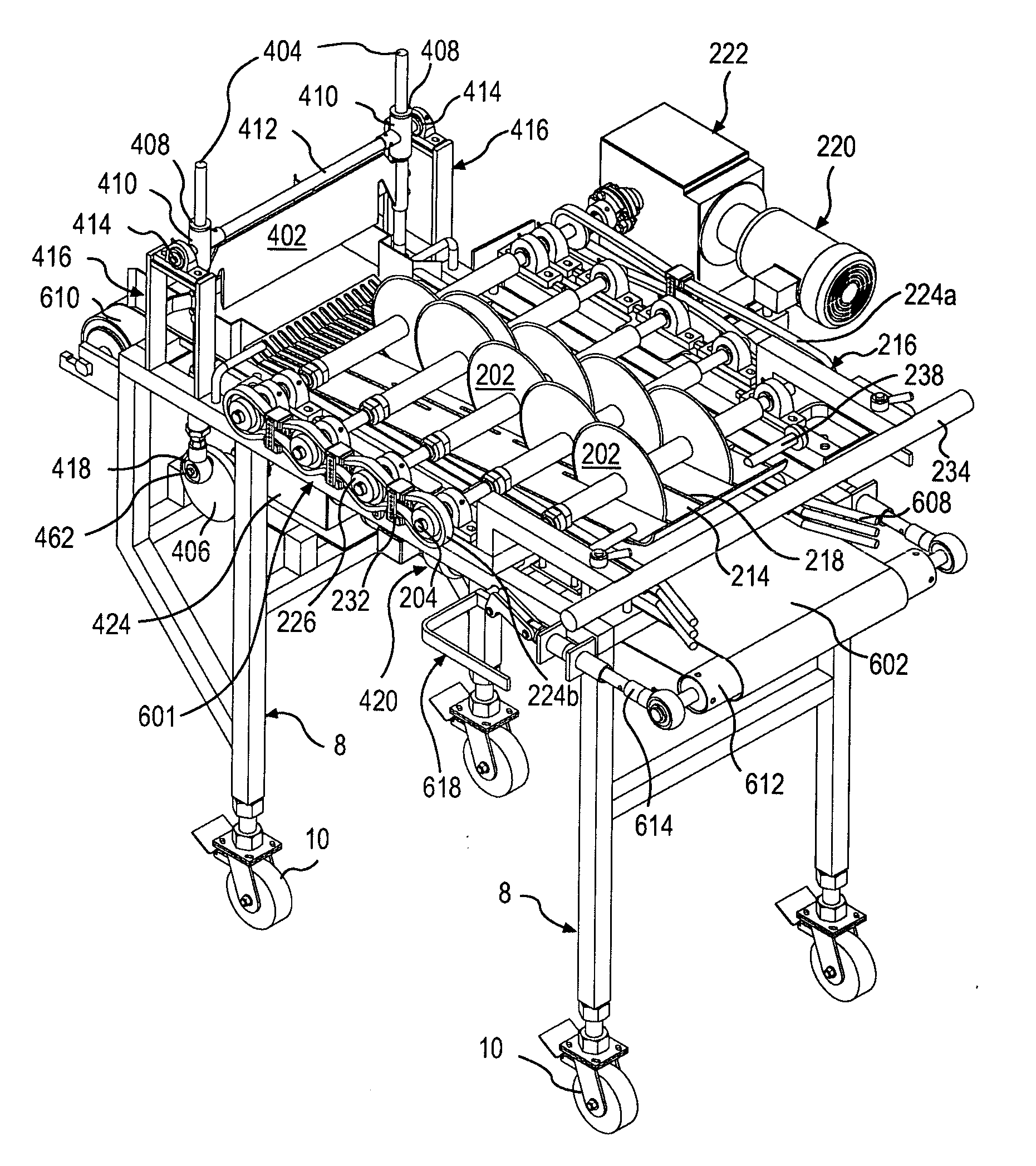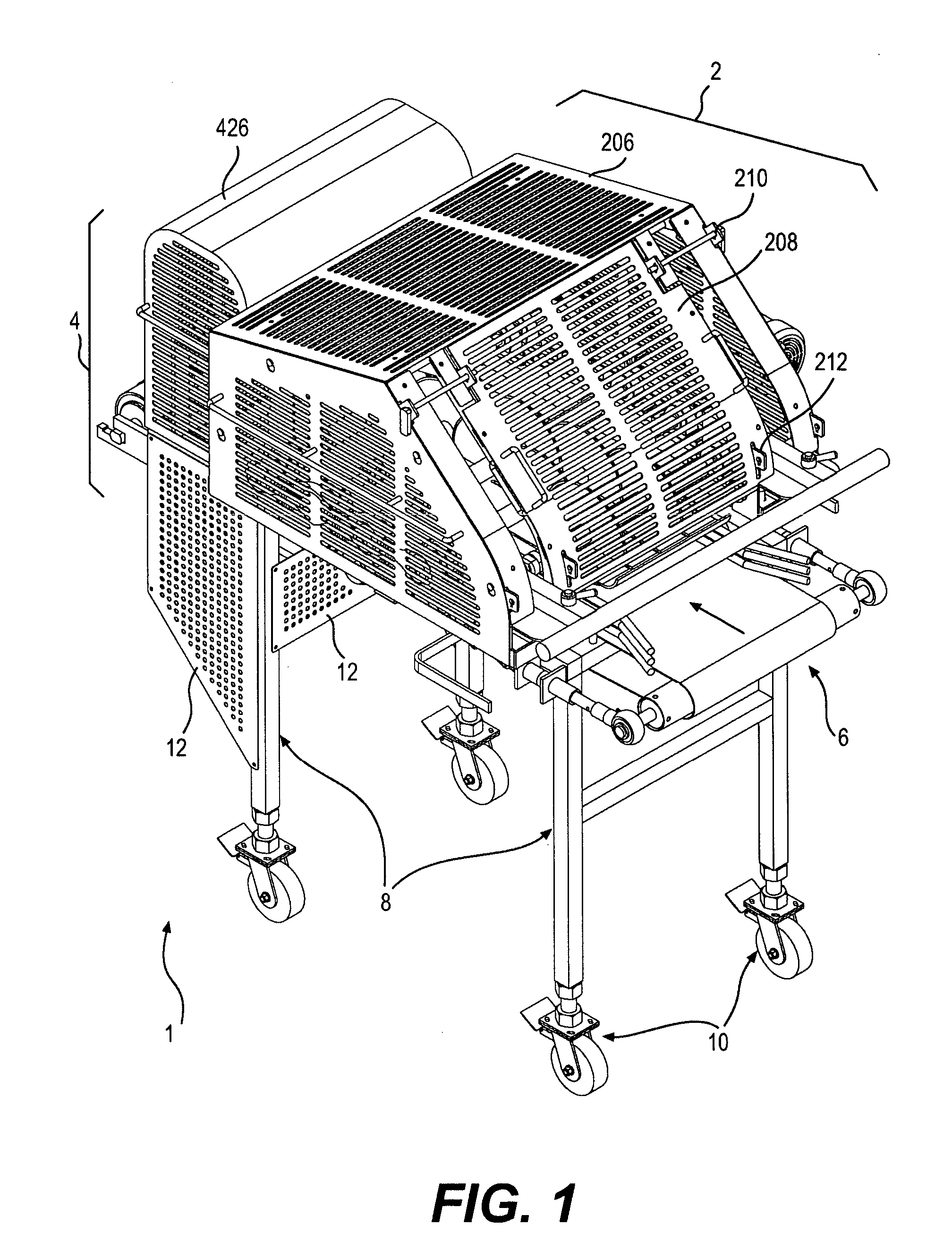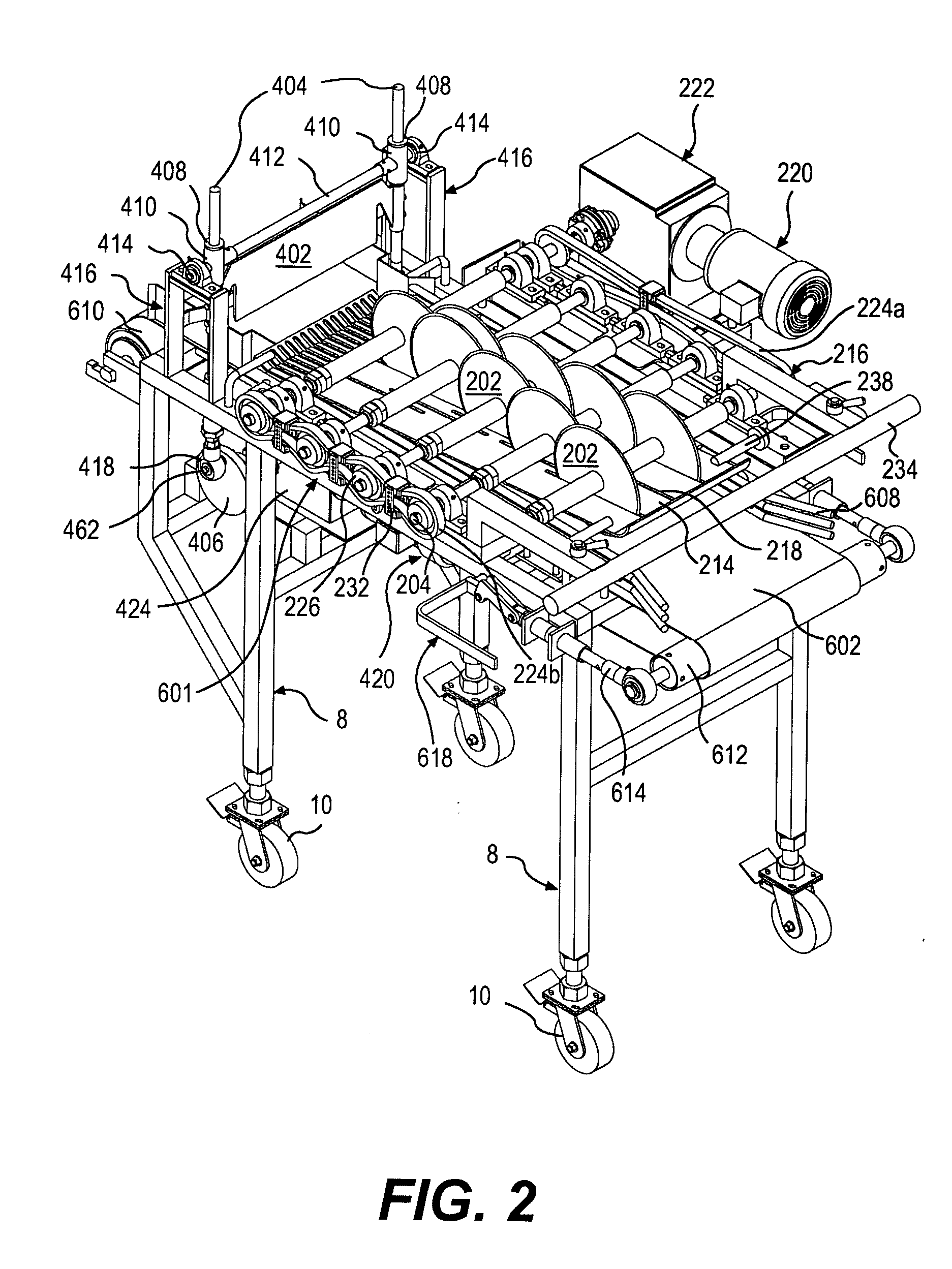Apparatus and process for dicing a deformable product
a technology a process, which is applied in the field of cubing or dicing a deformable product apparatus and a method, can solve the problems of requiring frequent maintenance, laborious operation, and prone to harp wire breakage, so as to prevent the build-up of products and minimize the wear of the chopping assembly components. , the appearance is squar
- Summary
- Abstract
- Description
- Claims
- Application Information
AI Technical Summary
Benefits of technology
Problems solved by technology
Method used
Image
Examples
Embodiment Construction
[0039] Our invention generally relates to an apparatus and method for dicing a deformable product to form blocks or cubes of the product. For illustrative purposes, the preferred embodiment of our invention is described in connection with the production of cheese, and in particular mozzarella style cheese. The apparatuses and methods of our invention are not limited to the production of cheese, however, and can be used in the production or processing of any number of products, as discussed above.
[0040] Our preferred embodiment of the V-cuber 1 is configured to cut mozzarella cheese into blocks for feeding to a shredding device, such as a VFS shredder. The blocks of cheese produced should be in the range of 1″-3″ wide, 1″-3″ long, and 1″-4.5″ thick, depending on the size and type of shredder that the blocks will be fed to. As shown in FIG. 1, the V-cuber 1 comprises a conveyor assembly 6 that conveys the cheese in a feed direction, a slitter assembly 2 having a plurality of circular...
PUM
| Property | Measurement | Unit |
|---|---|---|
| speed | aaaaa | aaaaa |
| speed | aaaaa | aaaaa |
| diameter | aaaaa | aaaaa |
Abstract
Description
Claims
Application Information
 Login to View More
Login to View More - R&D
- Intellectual Property
- Life Sciences
- Materials
- Tech Scout
- Unparalleled Data Quality
- Higher Quality Content
- 60% Fewer Hallucinations
Browse by: Latest US Patents, China's latest patents, Technical Efficacy Thesaurus, Application Domain, Technology Topic, Popular Technical Reports.
© 2025 PatSnap. All rights reserved.Legal|Privacy policy|Modern Slavery Act Transparency Statement|Sitemap|About US| Contact US: help@patsnap.com



